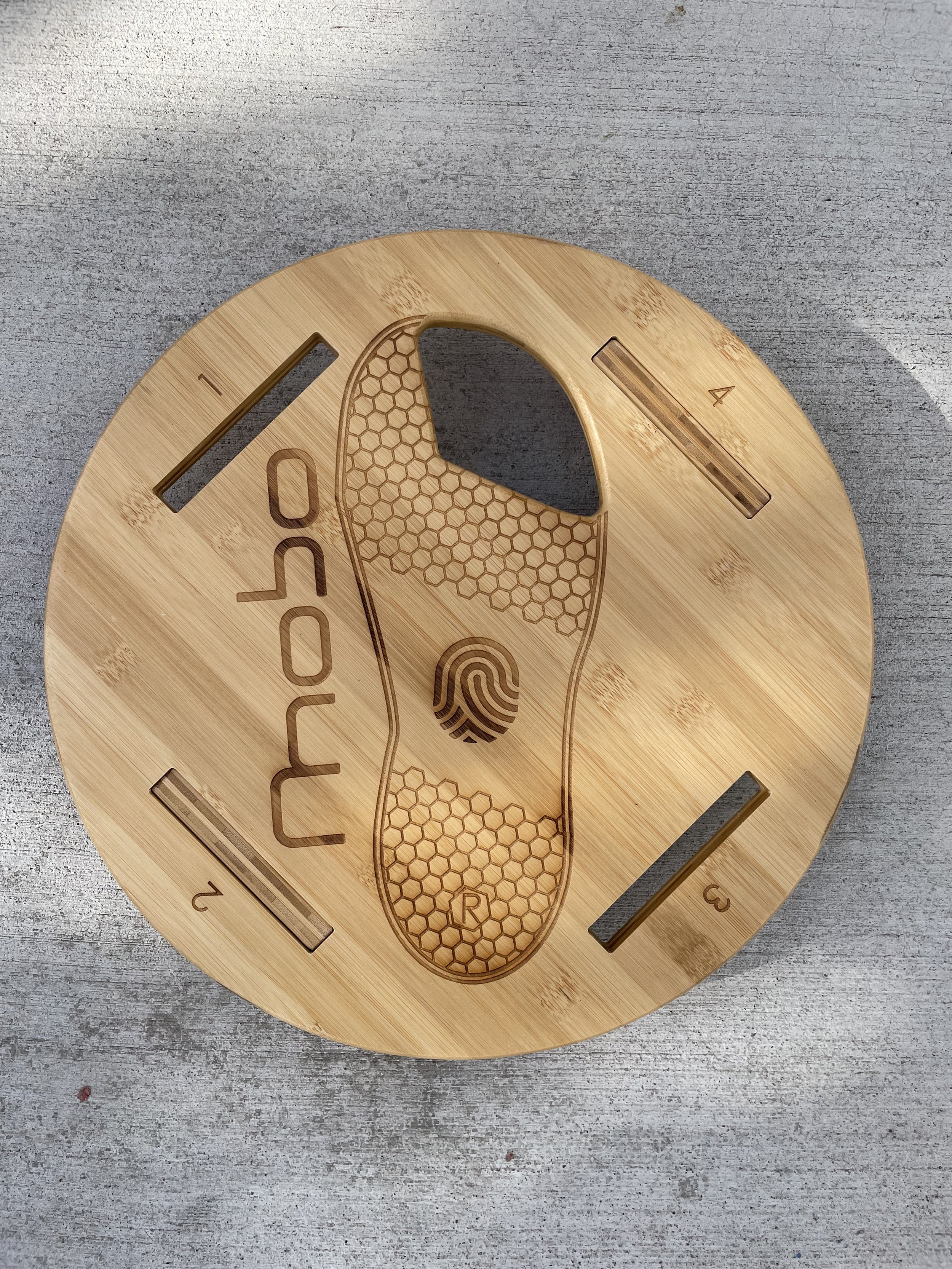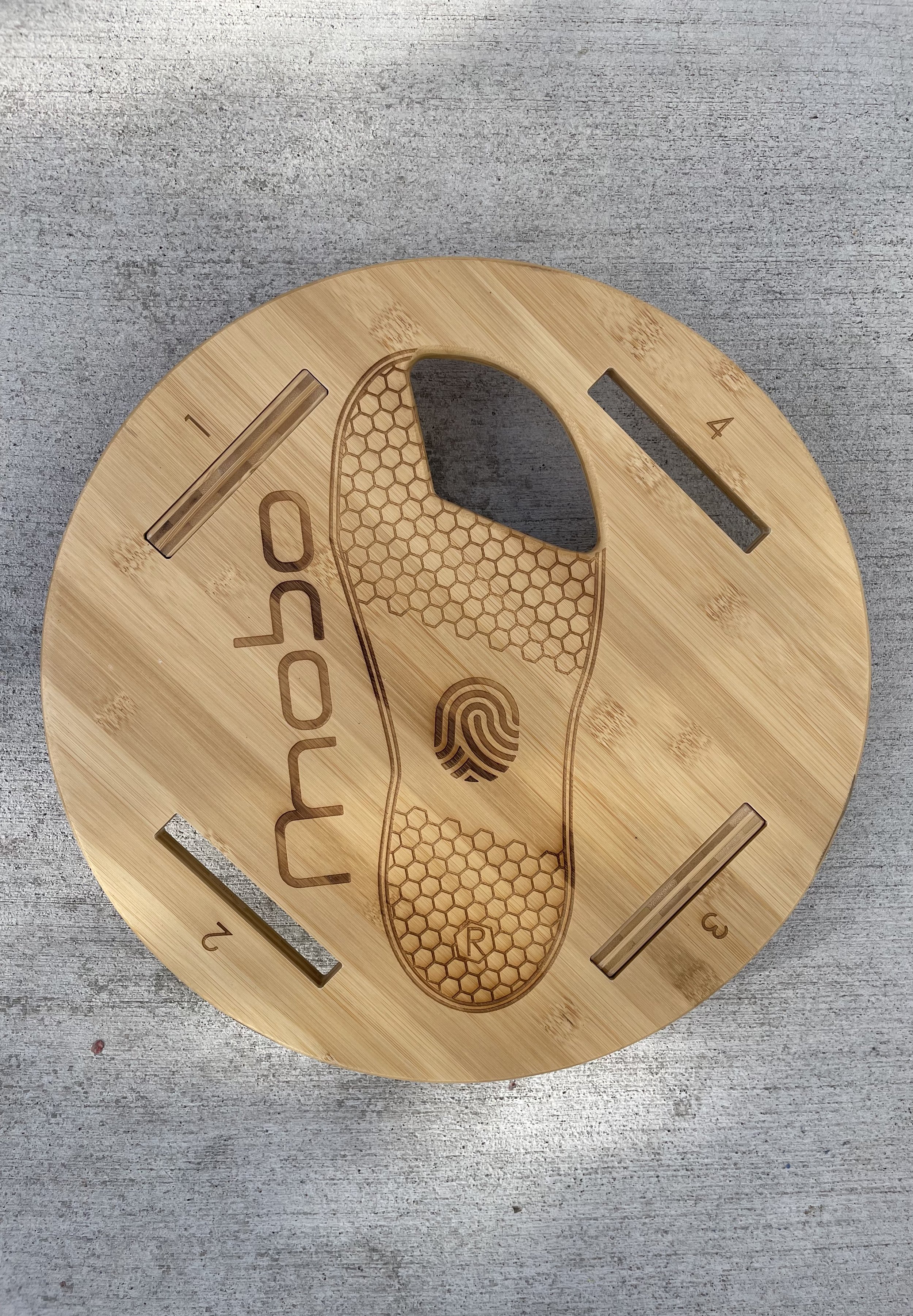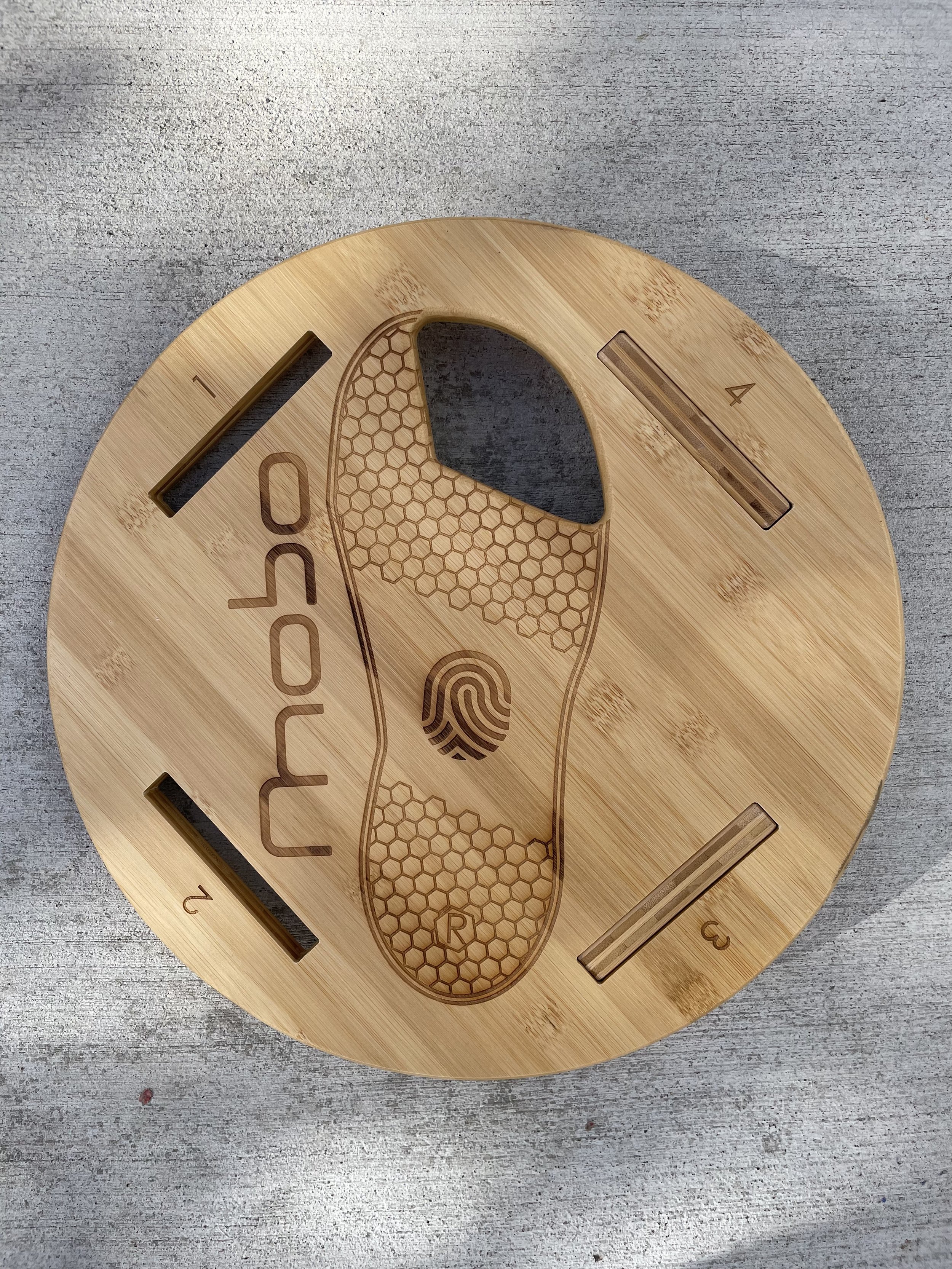Fin Placement Affects Demand
Did you know that the equipment set up you use for an exercise
can bias different muscles and strategies for different results?
For example: all squats aren’t the same. Let’s say you are doing a Traditional Squat with a bar on your back. As you lower down, your knees move forward, and your hips go back. A normal squat does a great job at improving vertical force production (up and down force) from the hips and knees. But there’s also a variation called Box Squats where you put a box or a bench behind you. In this set up, there’s much more of a back-to-front movement. This set up shifts the lever arms on your body, and thus biases the hips muscles much more than the knee muscles. Neither one of these options is better, and neither one is worse- it just depends on what you are trying to do.
More even load between the hips + knees? = traditional squat
More hip load each rep? = box squat
Fin Location Affects Function
Your board has cut outs that we call fin boxes or slots numbered 1,2,3,+4.
Each MOBO comes with 2 fins to vary the training effect on your body
Where do my fins go?
EVEN SLOTS
Most exercises on your MOBO will be done in EVEN slots, 2+4. The board tilts in-line with the way your foot pronates & supinates, and cues muscles inside your arch to drive the big toe into the ground for support. As an added benefit, it cues the external rotator muscles in the hips. Building control in this “spiral” from the big toe up into the outer hip is a key to improve your mechanics & form in the sports & activities you love to do
ODD SLOTS
Placing the fins in ODD slots, 1+3, is perpendicular to the axis of pronation & supination in your foot. This will cue muscles in the outer shin (the peroneal muscles) to anchor the ball of your big toe down to the ground. So if your goal is to work those muscles, then the ODD slots will target them.
FOREWARD SLOTS
Fins in the slots 1+4 will turn your MOBO into a slant board for calf raises. The hidden benefit in doing your calf raises on a MOBO versus a solid board is our toe box. The reality is that most people keep pretty sloppy control of their foot position as they do calf raises. The toe box cues muscles inside your feet to work in sync with your calf muscles to build durability.
OUTER SLOTS
Placing fins in slots 3+4 will tilt the board so that the outside of your foot sits higher than the inside of your foot. It will not rock, but this position is quite helpful for people who sprain their ankles over and over again. People who sprain often hang out on their outer foot, making it more likely to sprain again. Spending time in slots 3+4 will retrain & correct this strategy.
REAR SLOTS
The fins in slots 2+3 turn your MOBO into another slant board, but this time sloping downward. The Step Down exercise is a great way to load the knee complex, but again, most people allow their hips to drop & their foot to collapse as they move. The toe box in your MOBO cues you to steer your body straight as you move.
BOTH SIDES ARE THE SAME
We designed + numbered MOBO to be simple: If we say EVEN fin slots on the RIGHT foot, that’s the same axis, or tilt, as using the EVEN boxes on the LEFT foot. No need to overthink it!
Your Cheat Sheet!
EVEN SLOTS = target muscles in your feet
ODD SLOTS = muscles in outer shin that anchors your big toe down
FORWARD SLOTS = used to load the calf
OUTER SLOTS = Cue muscles in your feet + Fix ankle sprain strategies
BACKWARD SLOTS = integrates the foot + knee in squat movements
So What Does This Mean For Me?
MOBO was designed with flexibility to ensure you get the most out of your time. For the vast majority of you, we suggest placing the fins in the slots that we identify in every single video on the exercises page on our website.
If you are someone who has a history of spraining their ankle often, you’ll benefit from more time in the ODD and OUTER slots. And try out some different position! Moving is how you learn about your own body best!













